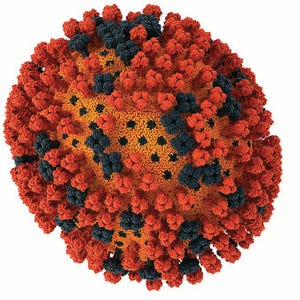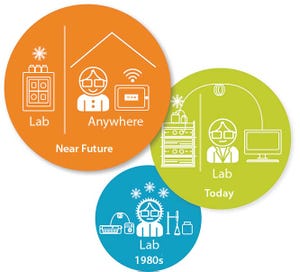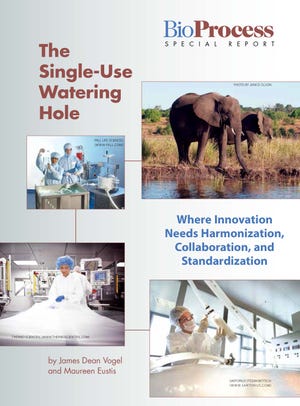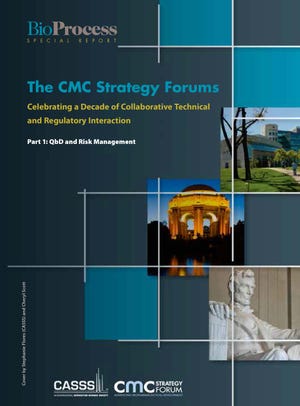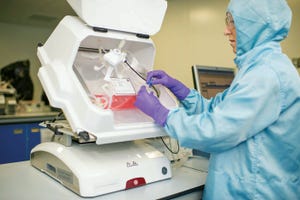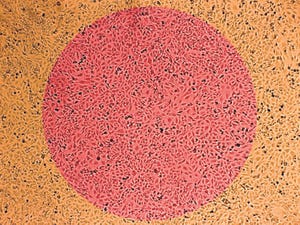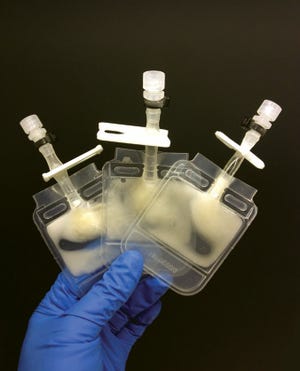From the Editor
Many publishers are grappling with managing and predicting the course of print and digital publishing. For academic journals with relatively few paid subscribers and/or association members focusing on specialty subject matter, going digital may make good sense — especially if that can lower subscription costs. However, BPI is a hybrid of reviewed journal and trade publication, addressing many reading and advertising preferences. The choice of which content to offer in print and which to duplicate or offer exclusively in digital format is not entirely clear cut to us. Our controlled-circulation business model rests on the economics of print publishing, with formulaic calculations of advertising:editorial ratios and circulation-auditing requirements. But it allows us to meet the information needs of a fairly broad audience spanning science/technology, different functional groups, business, regulatory affairs, and so on — while providing information to advertisers about who our readers are an...
H1N1 influenza virus (WWW.VISUALSCIENCE.RU.COM)
Over the past several decades, biologics such as monoclonal antibodies (MAbs) and recombinant proteins have provided therapeutic benefits and efficacy for the treatment of human disease. Completion of the human genome project (launched in 1990) produced a draft of the genome in 2001. A full sequence was published on the 50th anniversary (2003) of the initial publication of Watson and Crick’s papers on the double-helical structure of DNA (
1
). That large volume of genetic information has been translated into usable scientific knowledge, helping researchers in their hunt for better therapeutic approaches and establishing the functional relationships between genes and clinical disorders. Ongoing research has led to new understandings, which have paved the way for many new designs of recombinant biologics.
Today, most biopharmaceutical products are proteins expressed in recombinant hosts. Microbial systems are attractive platforms because of their low cost, hig...
Not long ago,
chromatography automation
meant strip recorders and peristaltic pumps. Today, few people would consider that to be true automation, and even fewer would settle for binders full of strip-recorder paper reels. Automation is becoming intelligent and in the process is making our workflows smarter. But how close is automation to being as smart as an experienced scientist? Bio-Rad Laboratories spoke with academics, biotechnology R&D scientists, and industrial process engineers about the evolution of chromatography automation — where it started, how far it has come, and what its limits might be.
Improved Software
Early fast protein liquid chromatography (FPLC) systems automated chromatography runs, but setting up a run had a steep learning curve. “It almost looked like you were programming code,” explains David Grabowski, team leader at R&D Systems. “You programmed these things in a list orientation. You’ve got parentheses where you’re typing in different column volumes, and then you’ve got diffe...
Within the past few years, the single-use technology (SUT) arena of the biopharmaceutical industry has exploded in growth. Leading organizations have predictably and understandably stampeded to the “watering hole” of single-use to drink up the advantages that disposable components offer over traditional multiuse parts and technologies. The initial value and risk-reduction results are being realized — but not without the emergence of other trade-offs. End users continue to call for standardization in emerging areas of the industry while also recognizing challenges posed by trying to stay up to date with current standards.
How do we, as an industry, begin to tackle the job of staying current with standards and evolving technologies? Some regulatory agencies encourage the use of consensus for standardization, and single- use components suppliers and end users have slowly begun a process of harmonizing, collaborating, and standardizing. This is the perfect opportunity for the best and brightest in our industr...
Introduction
by Cheryl Scott
The CMC Strategy Forum series provides a venue for biopharmaceutical product discussion. The meetings focus on relevant chemistry, manufacturing, and controls (CMC) issues throughout the life cycle of a therapeutic and thereby foster collaborative technical and regulatory interaction. Forum chairs share information with regulatory agencies to help them merge good scientific and regulatory practices. Outcomes of the forum meetings are published in
BioProcess International
. This process is meant to help ensure that biopharmaceutical products manufactured with advancing technologies in a regulated environment will continue to be safe and efficacious.
This special report series highlights five general subject areas that have been covered in the first 10 years of the CMC Strategy Forum series: quality by design (QbD) and risk management; manufacturing strategies; analysis and characterization; assays, biosimilars, and comparability; and process- and product-related impurities. Ap...
T-cell therapy is a rapidly growing field of personalized medicine, attracting the interest of venture capitalists and pharmaceutical companies alike. Such therapies exploit T cells’ innate abilities to protect against pathogens as well as to seek and destroy cancerous cells. Although many different forms of T-cell therapies are currently in clinical trials, they all follow a common protocol: T cells are isolated from a patient, modified and expanded in a laboratory setting, and then infused back into the same patient to fight his or her disease (
1
).
T-cell therapies that treat tumors and leukemia represent the majority of those in clinical trials. Isolating tumor-specific T cells from a patient is inherently challenging, especially because the majority of circulating T cells express a unique receptor of their own. Two approaches have been developed to overcome this challenge. For some solid tumors, T cells can be found embedded in the tumor mass, so those tumor-infiltrating lymphocytes (TILs) can be i...
The Bolt-on Bioreactor (BoB) project is an independent initiative aimed at developing and commercializing a bioreactor for efficient, automated culture of adherent cells in production of therapeutic cells and other biopharmaceuticals (
1
). After conducting thorough research on available culture systems for adherent cells, the BoB team believes that a successful alternative to existing devices must solve four major challenges. The first challenge has to do with volumetric productivity, the
second with process automation
, the third with
containment and sterility
, and the fourth with process economics. This is the first of four articles addressing each of those challenges and describing design features incorporated into the BoB project in development to overcome them.
Overconfluent five-day culture of CHO-K1 cells growing on a culture dish (colorized).
Challenge #1:
Herein I address the first challenge: to develop a system that provides a huge surface area for optimum cell attachment in a reduced volum...
Regulations mandate that biopharmaceutical product quality be controlled throughout manufacturing, storage, transportation, and delivery to patients (
1
). Operations often include freezing and thawing of a bulk drug substance, dilution of that purified substance to a target concentration, filtration, filling into a selected container–closure system, additional processing (e.g., lyophilization), inspection, packaging, storage, transport, and delivery (
2
).
Freezing is a common processing step used to maintain stability and quality of a drug substance during development and production of biopharmaceutical products. It is generally agreed upon that freezing drug substance maximizes productivity and reduces overall production costs by decoupling bulk solution manufacture and storage steps from final product manufacture. Freezing provides flexibility and cost savings by enabling batch processing: Large volumes of an expensive biological drug substance can be frozen in batches to allow the drug product to be ...
Where a biopharmaceutical company does business affects its profitability — as does how it manages its facilities and even where its non–customer-facing operations are located. In fact, facilities and real estate represent some of the biggest expenses for such companies. And yet, they are often overlooked. In today’s shifting global life-sciences landscape, site selection and management strategies are coming to the forefront as companies seek operating efficiencies, access to multidisciplinary talent, and cost-effective facilities. The following insights from JLL’s 2014 annual
Global Corporate Real
Estate Trends for the Life Sciences Sector
reveal how these strategies are evolving.
Changing Types and Sizes of Facilities in Demand
More than a third of life-sciences companies anticipate reducing or consolidating their real-estate portfolios in the North American and European markets, according to JLL’s report. Nearly two-thirds plan to expand their footprints in China and nearly half in Brazil. Newly bu...
Subscribe to receive our monthly print or digital publication
Join our 70,000+ readers. And yes, it's completely free.
